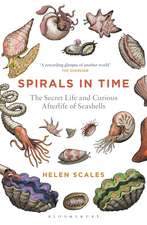Positive Feedback in Natural Systems: Biomathematics, cartea 15
Autor Donald L. DeAngelis, Wilfried M. Post, Curtis C. Travisen Limba Engleză Paperback – 15 mar 2012
Din seria Biomathematics
-
 Preț: 395.09 lei
Preț: 395.09 lei -
 Preț: 385.62 lei
Preț: 385.62 lei -
 Preț: 395.63 lei
Preț: 395.63 lei -
 Preț: 384.48 lei
Preț: 384.48 lei -
 Preț: 398.15 lei
Preț: 398.15 lei -
 Preț: 391.02 lei
Preț: 391.02 lei -
 Preț: 402.38 lei
Preț: 402.38 lei -
 Preț: 404.67 lei
Preț: 404.67 lei -
 Preț: 394.51 lei
Preț: 394.51 lei - 15%
 Preț: 704.04 lei
Preț: 704.04 lei - 15%
 Preț: 504.02 lei
Preț: 504.02 lei -
 Preț: 386.22 lei
Preț: 386.22 lei - 15%
 Preț: 654.43 lei
Preț: 654.43 lei -
 Preț: 390.25 lei
Preț: 390.25 lei -
 Preț: 390.63 lei
Preț: 390.63 lei -
 Preț: 405.06 lei
Preț: 405.06 lei -
 Preț: 398.74 lei
Preț: 398.74 lei - 15%
 Preț: 596.46 lei
Preț: 596.46 lei
Preț: 391.40 lei
Nou
Puncte Express: 587
Preț estimativ în valută:
74.89€ • 78.20$ • 61.84£
74.89€ • 78.20$ • 61.84£
Carte tipărită la comandă
Livrare economică 15-29 aprilie
Preluare comenzi: 021 569.72.76
Specificații
ISBN-13: 9783642826276
ISBN-10: 364282627X
Pagini: 308
Ilustrații: XII, 290 p.
Dimensiuni: 170 x 244 x 16 mm
Greutate: 0.49 kg
Ediția:Softcover reprint of the original 1st ed. 1986
Editura: Springer Berlin, Heidelberg
Colecția Springer
Seria Biomathematics
Locul publicării:Berlin, Heidelberg, Germany
ISBN-10: 364282627X
Pagini: 308
Ilustrații: XII, 290 p.
Dimensiuni: 170 x 244 x 16 mm
Greutate: 0.49 kg
Ediția:Softcover reprint of the original 1st ed. 1986
Editura: Springer Berlin, Heidelberg
Colecția Springer
Seria Biomathematics
Locul publicării:Berlin, Heidelberg, Germany
Public țintă
ResearchCuprins
1. Introduction.- 1.1 Homeostasis.- 1.2 Positive Feedback.- 1.3 Ecological Systems with Positive Feedback.- 1.4 Generalization 1: Increasing Complexity.- 1.5 Generalization 2: Accelerating Change.- 1.6 Generalization 3: Threshold Effects.- 1.7 Generalization 4: Fragility of Complex Systems.- 1.8 Summary and Conclusions.- 2. The Mathematics of Positive Feedback.- 2.1 Graphical Analysis of a Simple Dynamic Positive Feedback System.- 2.2 A System of Two Mutualists.- 2.3 A System of Two Competitors.- 2.4 Mathematical Analysis of Positive Feedback.- 2.5 Summary and Conclusions.- 3. Physical Systems.- 3.1 The Life History of a Star.- 3.2 Geophysical Systems.- 3.3 Autocatalysis in Chemical Systems.- 3.4 Summary and Conclusions.- 4. Evolutionary Processes.- 4.1 Early Evolution of Life.- 4.2 Evolution at the Species Level.- 4.3 Coevolution.- 4.4 Summary and Conclusions.- 5. Organisms Physiology and Behaviour.- 5.1 Destructive Positive Feedback.- 5.2 Biochemical Processes in Cells and Organisms.- 5.3 Feeding and Drinking Behavior.- 5.4 Sleep.- 5.5 Movement and Motor-Sensory Relationships.- 5.6 Mind-Body Relationship.- 5.7 Summary and Conclusions.- 6. Resource Utilization by Organisms.- 6.1 Energy Allocation Tactics.- 6.2 Territorial Defense Strategies.- 6.3 Chemical Defense Strategies.- 6.4 Growth Rate Strategy.- 6.5 Summary and Conclusions.- 7. Social Behavior.- 7.1 Evolution of r- and K-strategies.- 7.2 Development of Social Strategies.- 7.3 Mating and Reproduction.- 7.4 Population Models Incorporating Sexual Reproduction.- 7.5 Small Group Dynamics.- 7.6 Castes In Insect Societies.- 7.7 Dominance Within Groups.- 7.8 Models of Group Formation and Size.- 7.9 The Schooling of Fish.- 7.10 Social Interactions and Game Theory.- 7.11 Summary and Conclusions.- 8. Mutualistic and Competitive Systems.- 8.1 Dynamics of Mutualistic Communities.- 8.2 Limits to Mutual Benefaction.- 8.3 Multi-Species Mutualism.- 8.4 Models of the Evolution of Mutualism.- 8.5 Isolation and Obligate Mutualism.- 8.6 Limited Competition.- 8.7 Summary and Conclusions.- 9. Age-Structured Populations.- 9.1 Age Structure.- 9.2 Leslie Matrices.- 9.3 Compensatory Leslie Matrices.- 9.4 Interacting Populations.- 9.5 Coexistence of Two Interacting Populations.- 9.6 Other Compensatory Models.- 9.7 Life-History Strategies.- 9.8 Intrinsic Rate of Increase.- 9.9 Reproductive Strategies.- 9.10 Summary and Conclusions.- 10. Spatially Heterogeneous Systems: Islands and Patchy Regions.- 10.1 Classical Theory of Island Biogeography.- 10.2 Island Clusters.- 10.3 Insular Reserves.- 10.4 Modeling the Patchy System.- 10.5 A Single Species in a Patchy Region.- 10.6 Time to Extinction on a Patch.- 10.7 Persistence of a Species in a Two-Patch Environment.- 10.8 Stability of a Single-Species, Two-Patch System.- 10.9 Persistence of a Species in an N-Patch Environment.- 10.10 Multi-Species, Multi-patch Systems with Competition and Mutalism.- 10.11 Persistence of a Species in a Two-Species, Two-Patch Environment.- 10.12 Persistence of a Species in an L-Species, iV-Patch Environment.- 10.13 Stability of a Two-Species, Two-Patch Model.- 10.14 Stability of an L-Species, iV-Patch Model.- 10.15 Relationship Between Reserve Design and Species Persistence.- 10.16 Summary and Conclusions.- 11. Spatially Heterogeneous Ecosystems: Pattern Formation.- 11.1 Spontaneous Emergence of Spatial Patterns.- 11.2 Diffusion Model.- 11.3 Pattern Formation Through Instability.- 11.4 Congregation of Colonial Organisms.- 11.5 Boundary Formation by Competition.- 11.6 Summary and Conclusions.- 12. Disease and Pest Outbreaks.- 12.1 Physiological Effects in the Host Species.- 12.2 Mutualistic Interactions of more than one Pathogenic Agent.- 12.3 Models of a Directly Communicated Disease or Parasite.- 12.4 Effects of Spatial Heterogeneity on Disease Outbreak Threshold Conditions.- 12.5 Design of Immunization Programs.- 12.6 Shape of the Contagion Rate Function.- 12.7 Comparison with other Spatially Heterogeneous Models.- 12.8 Host-Vector Models.- 12.9 Summary and Conclusions.- 13. The Ecosystem and Succession.- 13.1 The Ecosystem.- 13.2 Succession as a Positive Feedback Process.- 13.3 A Clementsian Model.- 13.4 Markov Chain Models.- 13.5 A Model of a Fire-Dependent System.- 13.6 Positive Feedback Loops in Ecosystems.- 13.7 Nutrient Cycling.- 13.8 Selection on the Community or Ecosystem Level.- 13.9 Summary and Conclusions.- Appendices.- Appendix A: Positive Linear Systems.- Appendix B: Stability of Positive Feedback Systems.- Appendix C: Stability of Discrete-Time Systems.- Appendix D: Positive Equilibria and Stability.- Appendix E: Comparative Statics of Positive Feedback Systems.- Appendix F: Similarity Transforms.- Appendix G: Bounds on the Roots of a Positive Linear System.- Appendix H: Relationship Between Positive Linear System Stability Criteria and the Routh-Hurwitz Criteria.- References.- Author Index.












